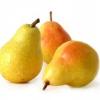But Americans aren't eating a starch-based diet, we're eating starch in the form of processed-food and pastries also loaded with omega-6 oils. How many people do you know that eat boiled grains and steamed vegetables for supper? Plus if you look at the dietary trend of America since 1909, you will see that consumption of grains, flour, beans and boiled-potatoes were much higher back then. Now we eat breakfast-cereal, flour mix with omega-6 oils, fried-potatoes and now Americans don't really eat much beans anymore. If they do, its canned pork and beans or something like that.
Then why is your starch diet heavy on refined starches -- pasta and white rice?
I see absolutely no fruit
The diet you proposed is horrible.
Natural fats are good, even animal fats.
Non-fruit digestible carbohydrates are for the most part not really that good for you, and they are not needed in the diet.
In fact, the human body has no need for carbohydrates at all.
The brain will run just fine on ketone bodies, as will the muscles. Your liver will make all the glucose you need.
High carb low fat diets are bad for you, very very bad. They make you fat, raise triglyceride levels, and cause metabolic syndrome.
I want to defer getting into any argument with anyone about high carb versus low carb. I am on Sensei's side of that issue, but let's defer that to another day. But I think Sensei hits on a key idea here that very few people understand, even if you want to be a high carb advocate.
Not all carbs are created equal. The work done in support of the Specific Carbohydrate Diet (SCD) to fight Crohn's Disease, Ulcerative Colitis, and other forms of IBD has very clearly shown that monosaccharides (both glucose and fructose) rapidly absorb in the small intestine and do not survive to feed bad bacteria that produce endotoxins in the colon. Fruit contains glucose and fructose, and I used to think that eating fruit was equivalent to eating sucrose, but it turns out that they are not the same thing. SOME kinds of fruit - particularly berries - have about equal amounts of glucose and fructose stored as monosaccharides, NOT stored as sucrose. Other types of fruit are high in sucrose (e.g., bananas, mangoes, and many of the sweeter types of fruit). If you get your carbs from berries and other sources that are simple monosaccharides, you starve the bad bacteria that create so many intestinal issues for so many people.
I hesitate to raise the point because all of the studies that look at these issues are bad. Like most diet studies, they fail to control all the variables well. The state of research on the SCD diet was summarized in this 2007 article:
http://www.ncbi.nlm....les/PMC1925010/
"The exact role of sucrose pathogenesis and progression of IBD has not yet been fully elucidated. Some believe that unrefined carbohydrates, starches and sucrose may play a role in dysbiosis (abnormal alteration of the colonic bacterial flora). This thinking is evident in a popular diet for IBD, Elaine Gottschall's specific carbohydrate diet.
...
Although there have not been any controlled studies evaluating the effectiveness of this diet in patients with IBD, there is no shortage of testimonials proclaiming long-term improvement and remission (http://www.breakingt...testimonies.htm)."
The problem with sucrose is that to break this disaccharide into the monosaccharides glucose and fructose requires an enzymes sucrase. For whatever reason, some people lack enough of that enzyme to break down all of the sucrose. So, for those people, eating the monosaccharides does not produce the same result as eating sucrose.
This insight about monosaccharides allowed me to remodel my diet with pretty amazing effects. Instead of eating starches, I now have for breakfast a smoothie with berries and I throw in some veggies (butter lettuce) that I want for nitrates (that's a separate story). Taking the sugars as monosaccharides instead of as sucrose or as starch had the following results for me, almost immediately:
1) All of my intestinal symptoms (gas and indigestion) simply disappeared, within about two weeks
2) My glucose metabolism improved dramatically, immediately. Instead of getting glucose at 140+ one hour after eating a starchy carb meal, I now rarely see it go above 110, and there many breakfasts where it doesn't go above 95. As a prediabetic, those were impressive results.
3) I instantly started to feel better, dramatically better. The energy I derived from food stayed constant instead of causing me to get sleepy or leaving me feeling unwell.
Only about 1/2 of 1% of the US population has the more severe IBD like Crohn's or Ulcerative Colitis. But some estimates of the more benign irritable bowel syndrome (IBS) are that it may affect as much as 20% of the population. So, even if you are pro carb, shaping the type of carbohydrates you eat to make them rapidly digestible and unavailable to bad bacteria can have dramatic health impacts.
I acknowledge some people do well on starchy carbs. Those people are usually 25 years old and very fit.  The only point I want acknowledged is that disaccharides like sucrose and polysaccharides like starch can create digestive issues for some non trivial percentage of the population. So even if you want to take in a lot of carbohydrate, taking the time to shape the amount of it that comes from monosaccharides can have a big impact on health, completely separate from issues about what percentage of caloric intake is from carbs overall.
The only point I want acknowledged is that disaccharides like sucrose and polysaccharides like starch can create digestive issues for some non trivial percentage of the population. So even if you want to take in a lot of carbohydrate, taking the time to shape the amount of it that comes from monosaccharides can have a big impact on health, completely separate from issues about what percentage of caloric intake is from carbs overall.
Edited by pone11, 20 January 2015 - 10:18 AM.





























































